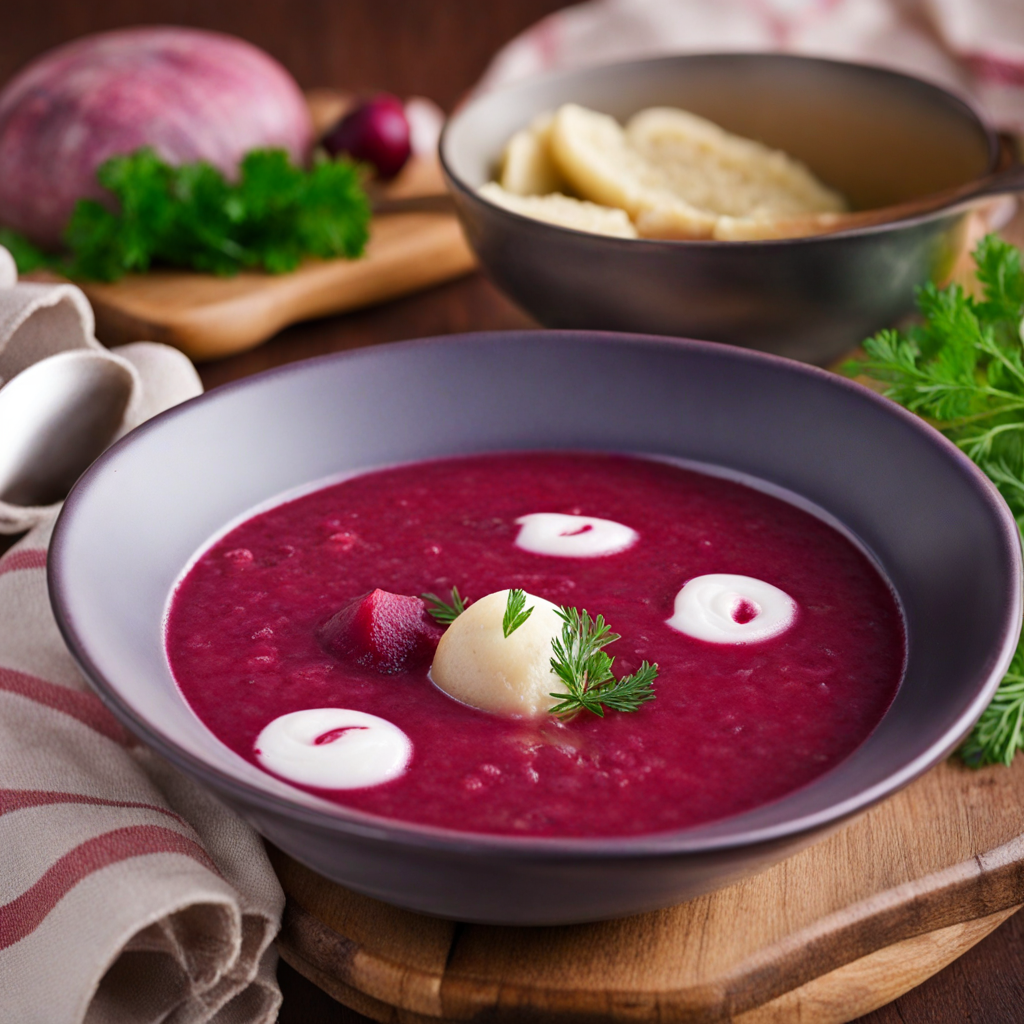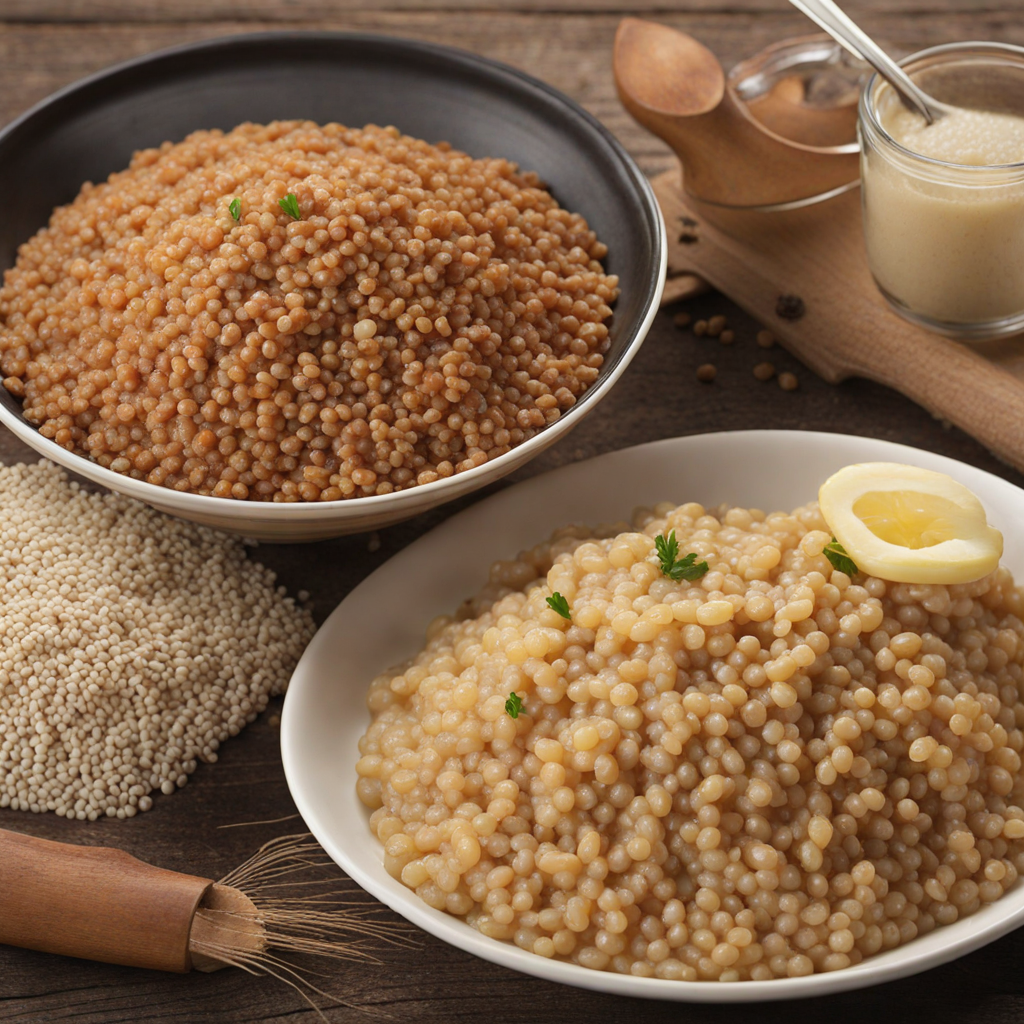Placki Ziemniaczane
Placki Ziemniaczane, or Polish potato pancakes, are a delightful and comforting dish that showcases the humble potato in a deliciously crispy form. Made primarily from grated potatoes, these pancakes are typically combined with onions, eggs, and a touch of flour, which helps bind the mixture together. The key to their charm lies in the frying process, where they are cooked until golden brown and perfectly crispy on the outside, while remaining tender and fluffy on the inside. Served hot, they often emit an enticing aroma that draws you in, promising a satisfying bite. Traditionally, Placki Ziemniaczane are enjoyed with a variety of toppings that enhance their flavor profile. A popular choice is a dollop of sour cream, which adds a creamy tang that complements the savory notes of the pancake. Some people opt for applesauce or a sprinkle of sugar, introducing a sweet contrast that highlights the dish’s versatility. Whether enjoyed as a side dish, a snack, or a hearty meal, these pancakes can be adapted to suit different tastes and preferences, making them a beloved comfort food in Polish cuisine. The enjoyment of Placki Ziemniaczane extends beyond just their taste; it is also about the experience of sharing them with family and friends. Often made during gatherings or special occasions, these potato pancakes hold a nostalgic value for many, evoking memories of home-cooked meals and warm kitchens. With their satisfying crunch and comforting flavor, Placki Ziemniaczane invite you to savor a taste of Poland, offering a glimpse into the rich culinary traditions of this vibrant country.
How It Became This Dish
Placki Ziemniaczane: A Delicious Journey Through Polish Culinary History Placki ziemniaczane, or potato pancakes, stand as a beloved staple of Polish cuisine, embodying the country’s agricultural heritage and the resilience of its people. These golden, crispy fritters, often served with applesauce or sour cream, evoke a sense of nostalgia for many Poles and have a rich history that reflects the broader cultural and social changes in Poland over the centuries. Origins: The Humble Potato The story of placki ziemniaczane begins with the introduction of the potato to Europe in the late 16th century. Originally domesticated in the Andean mountain region of South America, the potato made its way to Europe through Spain and quickly became a dietary staple due to its adaptability and nutritional value. In Poland, the potato was embraced and transformed into a versatile ingredient that would define culinary traditions. By the 18th century, potatoes had become widespread in Polish households, particularly among the peasantry. Placki ziemniaczane emerged as a practical dish that utilized the abundant potato harvest, demonstrating the ingenuity of Polish cooks who sought to make the most of locally available ingredients. The simple combination of grated potatoes, onions, eggs, and flour made it easy to prepare, and it quickly became a common food across various social classes. Cultural Significance: More Than Just Food Placki ziemniaczane are more than just a delicious dish; they are steeped in cultural significance. Traditionally, these potato pancakes were often made during family gatherings, religious holidays, and harvest festivals. They served as a symbol of hospitality and warmth, bringing together family and friends around the dining table. The dish also reflects the communal nature of Polish society, where food is an integral part of social gatherings. Moreover, placki ziemniaczane are often associated with Polish comfort food. The warm, crispy texture and savory flavor provide a sense of nostalgia for many, reminding them of their childhoods and home-cooked meals prepared by their mothers and grandmothers. In this way, the dish transcends mere sustenance and becomes an embodiment of love, care, and tradition that ties generations together. Development Through Time: From Peasant Food to Culinary Icon As Poland's history unfolded, so too did the evolution of placki ziemniaczane. The dish began as peasant food, accessible to those with limited means. However, as the 19th century progressed, and Poland experienced significant social and political changes, the perception of this humble dish began to shift. The potato pancake became a symbol of Polish identity, especially during periods of foreign occupation and upheaval. In the early 20th century, placki ziemniaczane gained popularity in urban areas, where they were served in taverns and restaurants. The dish began to be prepared in various styles, with regional variations emerging across the country. For example, in some areas, cooks added mushrooms or cheese to the batter, while others opted for a sweeter version, incorporating grated apples or cinnamon. The interwar period saw a resurgence of interest in traditional Polish cuisine, with a focus on preserving culinary heritage as a means of national identity. Placki ziemniaczane, with their deep-rooted connection to the land and Polish culture, became emblematic of this movement, celebrated in cookbooks and food festivals. Post-War Era: Resilience and Reinvention The impact of World War II and the subsequent communist regime brought about significant changes to Polish society and its culinary landscape. The potato remained a staple food, yet availability and resources were often scarce. During this time, placki ziemniaczane adapted once more, becoming an economical dish that could feed families during difficult times. The ability to stretch a small amount of potatoes into a filling meal was invaluable, and so the dish continued to thrive. In the 1980s, as Poland began to transition away from communism and embrace a more open economy, there was an explosion of interest in Polish cuisine both domestically and abroad. The diaspora played a significant role in this revival, with Polish immigrants sharing their culinary traditions and introducing placki ziemniaczane to new audiences. Restaurants began to pop up, serving traditional dishes to both Polish nationals and curious international diners. A Modern Culinary Revival In recent years, placki ziemniaczane have experienced a renaissance, finding their place in contemporary Polish cuisine. Chefs have embraced the dish, experimenting with flavors, textures, and presentation. Modern takes on the classic recipe incorporate ingredients like sweet potatoes, herbs, and gourmet toppings, while still paying homage to the traditional methods of preparation. The rise of the farm-to-table movement has also reinforced the dish’s appeal, as chefs seek to emphasize local, seasonal ingredients. The humble potato is celebrated not just for its practicality, but for its versatility and flavor, allowing it to shine in various culinary contexts. Food festivals and culinary events across Poland now feature placki ziemniaczane, celebrating their place in both history and modern gastronomy. Conclusion: A Dish for All Seasons Placki ziemniaczane is more than just a potato pancake; it is a dish deeply woven into the fabric of Polish identity, history, and culture. From its origins as a peasant food to its current status as a beloved culinary icon, placki ziemniaczane have adapted and evolved while remaining a symbol of home, tradition, and resilience. Whether served as a comforting meal at home, a gourmet dish in a restaurant, or a nostalgic reminder of days gone by, placki ziemniaczane continue to hold a special place in the hearts of Poles around the world. As they are enjoyed today, they remind us of the enduring power of food to connect us to our roots, our history, and one another.
You may like
Discover local flavors from Poland







